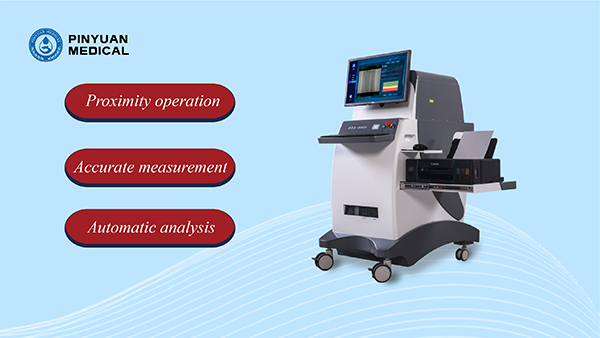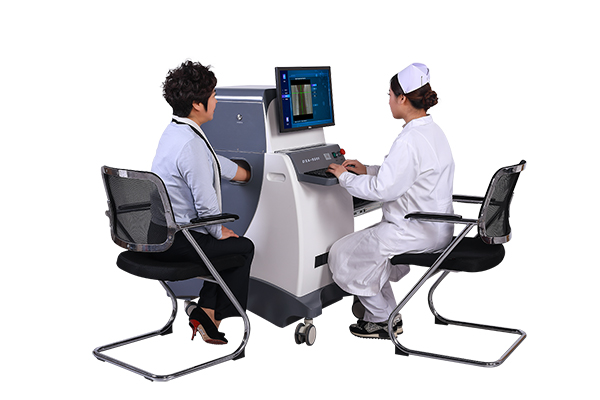Bone densitometry is the primary test used to diagnose osteoporosis. Bone densitometry accurately measures the average amount of bone mineral content per unit area or per unit volume, which can be used to diagnose osteoporosis and can be an aid in predicting the occurrence of fractures. Low bone density is a decrease in the amount of minerals in the bones, causing them to become weak and brittle. It is often strongly associated with osteoporosis and increased risk of fractures. Today, let's learn about the diagnostic methods and steps of bone density.
I. Bone Density Examination Methods
Categorized according to the measurement site: 1. Trunk bone density measurement, referring to the measurement of vertebrae and hip bone density; 2. Peripheral bone density measurement, with common measurement sites such as forearms, fingers and heel bones. In China's Medium- and Long-Term Plan for the Prevention and Control of Chronic Diseases (2017-2025), released by the State Council in 2017, it is required that the physical examination of people over 40 years old should include a bone density testing program. Routine bone density checkups should be included for perimenopausal and postmenopausal women, middle-aged and elderly male population over 50 years old, and people at high risk of osteoporosis. Use with caution in children. Bone densitometry with radiation is contraindicated in pregnant women.
Dual-energy X-ray absorptiometry (DXA) is the most commonly used clinical method: DXA uses two types of X-rays, high and low energy, to scan the human body and measure the bone density; DXA has a low dose of radiation, and it is a widely used and recognized method of bone density measurement; DXA is commonly used to measure the lumbar vertebrae, the hips, and the forearms; the results of the DXA measurements include the bone mineral content, area, and bone mineral density, and the bone mineral content in the DXA measurements needs to be combined with the biochemical test report. Bone mineral content in DXA measurement should be combined with biochemical test report.
II.Diagnostic Criteria
The diagnostic criteria for low bone mineral density are usually based on the results of DXA, as follows:
1. Peri-menopausal and postmenopausal women, middle-aged and elderly men over 50 years of age use T-value: T-value is the result of the bone density of the subject compared with the average result of the bone peak of the reference population of young and middle-aged people of the same ethnicity and gender. t-value ≥ -1.0: belongs to the range of normal bone mass. t-value between -1.0~-2.5: belongs to the range of low bone mass or reduced bone mass, i.e., the bone mineral density is lower than normal, but not up to the osteoporosis standard. t-value ≤-2.5: belongs to the range of normal bone mass. T-value ≤ -2.5: diagnosis of osteoporosis; T-value ≤ -2.5 and history of fracture, diagnosis of severe osteoporosis.
2. Pre-menopausal women and men under 50 years of age, especially children, use Z-value: Z-value is the result of the measurement of the bone density of the subject compared with the average results of the reference population of young and middle-aged people of the same race and gender. z-value ≤ -2.0 indicates that the bone density is lower than that of the same age group. z-value > -2.0 indicates that the bone density is in the range of the same age group.
It should be pointed out that bone density measurement itself only reflects the bone mineral content and bone density of the measured area, so in the diagnosis of osteoporosis, the results of bone density measurement is only one of the important indicators, and it is still necessary to carefully differentiate and diagnose other causes of the disease.
III. Treatment and precautions
Before the bone density test, drugs that affect bone metabolism, such as calcium and vitamin D, should be avoided. Loose and comfortable clothes should be worn during the examination to avoid metal objects etc. interfering with the results. For patients who have been diagnosed with low bone density, targeted treatment and lifestyle modifications should be made according to the doctor's recommendations to reduce fracture risk and improve bone health.
If low bone density is present, it can be treated in the following ways:
1. Rehabilitation guidance. Giving proper health education guidance to patients with low bone density has positive and important significance for rehabilitation. It can let patients understand the causes and risks of osteoporosis, as well as the treatment goals and methods, so that they can correctly recognize the condition of low bone density with a positive mindset.
2. Change living habits. Help patients to establish healthy living habits, such as:①Adjust the dietary structure, avoid eating too much dietary fiber, eat less sodium-containing foods, such as soy sauce, salted fish, salted meat, etc., and consume more calcium-containing foods, such as milk, fish, shrimp, beef and mutton, legumes (including soybean products), and dried fruits, and reduce the intake of coffee, strong tea, and carbonated beverages. Quit smoking and limit alcohol. ② Regular work and rest, in addition to diet to pay attention to, to ensure adequate sleep time, will help bone health. ③ Develop good habits, adhere to the correct method and posture of rising, sitting, lying down and turning around; participate in more outdoor activities to increase the opportunity to come into contact with the sun. ④Prevent falls and strengthen protective measures for oneself and the environment in daily activities and sports to avoid fractures. ⑤ Maintain proper weight, especially middle-aged and old people should not lose weight blindly, because the bone density of people with large weight is often higher than that of thin people.
3. Enhance exercise. Exercise is one of the measures to ensure bone health. Appropriate stress stimulation can reduce bone loss, balance bone metabolism as well as gain and preserve bone mass, which mainly includes plyometric training, aerobic training, joint mobility training and balance and coordination training, etc. By enhancing muscle strength, it can increase the loading of bones, which will help to improve bone density.
4. Medication. It mainly includes calcium supplements, vitamin D preparations, bone resorption inhibitors, bone formation agents and drugs that affect bone metabolism. No matter which kind of drugs you take, you need to use them under the guidance of a professional doctor.
5. Physical therapy. High-quality clinical studies have shown that low-frequency pulsed electromagnetic fields, whole-body vibration therapy, and low-intensity pulsed ultrasound can increase bone density and improve the microstructure of bone.
6. Psychological counseling. Some people with low bone density are often accompanied by fear, anxiety or even depression, etc. Psychological counseling and psychological support treatment can be provided to these patients.
7. Regular bone density examination. We should have regular bone density checkups so that doctors can understand the bone health condition and adjust the treatment program in time.
To summarize, low bone density is not terrible, early prevention and early diagnosis is the key to prevent the occurrence of serious osteoporosis.
Source: Nanning Evening News
Post time: Aug-27-2024


